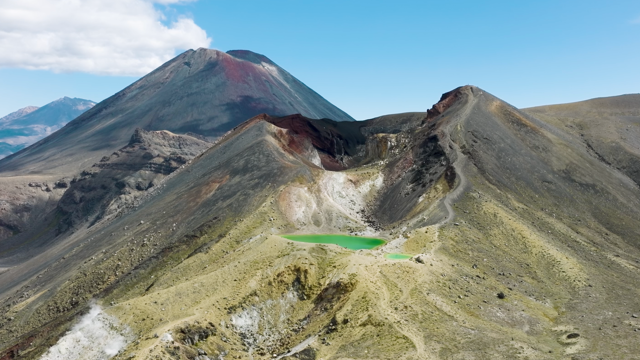Successfully completing the TAC is possible for most moderately fit hikers, but there are some key tips to a successful day out that are commonly overlooked by much of the information floating around online. In this blog, with the help of our friends from the NZ Mountain Safety Council, we’ll give you the keys to a great day on the Tongariro Alpine Crossing.
Have a second day available
When considering the Tongariro Alpine Crossing don’t think of it as just a single day trip. Most visitors allow for one day in their travel plans, but this is a mistake as it commits you to the trip regardless of the weather. The North Island Volcanic Plateau has some of the most changeable weather in New Zealand, and when it’s bad, it’s really bad.
By allowing for a second day, you have a backup. You can look at the weather forecast and pick the best day, greatly increasing your enjoyment and safety. There’s no guarantee you’ll get good weather either day, but there’s plenty of other more suitable walks to try in bad weather. As a back-up, have a look at shorter walks to Tama Lakes, Lake Rotopounamu or Taranaki Falls. If it’s really yuck, but you’re desperate to stretch your legs, the Tongariro River Trail is a good option.
Pro tip: Use Plan My Walk to get track information, plus the weather forecast and see if there are any weather warnings or watches.
Rise and shine early
The Tongariro Alpine Crossing is 19.4km long. It’s like doing a half marathon over a mountain covered in rough volcanic rock. You should expect a long, tiring day.
By leaving early you give yourself as much daylight as possible and you minimise the chances of finishing in the dark. The day you do the TAC is not a good one for a sleep-in! Talk to your transport operator if you have questions around timings for the season you wish to walk it.
Pro tip: even in summer, carry a head torch. You never know what could happen out there and a small light-weight headtorch makes those final few kilometres so much easier at dusk.
A little prep goes a long way
The TAC is unlike most other day hikes in New Zealand. Aside from the fact it traverses active volcanoes, and is one of the most culturally rich locations in the country, the highly dynamic weather, long duration and treacherous terrain combine into a challenge like no other.
The best approach to a successful trip is good planning and preparation. Pay attention to the weather forecast and try to understand what that weather will be like at nearly 2000m on Red Crater.
Even on nice summer days with a good weather forecast carry a rain jacket, warm hat and gloves and wear strong sturdy footwear. A spare warm layer is essential, as is at least 2L water, and leave those cotton t-shirts or pants at home.
Pro tip: carry a little toilet paper with you. There are multiple toilets on the track but no toilet paper, hand sanitiser or drinkable water. Add this to your gear list in Plan My Walk.
It’s ok to turn around
This is such an important thing to keep in mind. Turning around, for whatever reason, isn’t a failure, it’s being smart. All too often, people push on into poor weather or with a slight injury like a rolled ankle or bad blisters. Sometimes they get away with it, other times they get caught out and need emergency help.
Set some key decision-making points before you go; we suggest these are on arrival at Soda Springs toilets, on arrival at South Crater and at the highest point, Red Crater. At all of these points, take a moment to consider your situation, the weather, and how others in the group are doing. Turning around is ok.
The halfway point is much further on than you think, around Blue Lake, so anywhere close to this location and you’re best to push on towards Ketetahi Carpark.
Pro tip: carry the number of your transport operator, if you need to turn around just give them a call and they’ll come and pick you up – for free. Mobile phone reception is possible at numerous points along the track.

Learn more about the track
So, if the Tongariro Alpine Crossing is on your road trip itinerary this summer, continue your learning! There is a brand new video out by the NZ Mountain Safety Council, it is a visual guide to show you what to expect and how to prepare for it – a must watch for any visitor.
Start building a trip plan on Plan My Walk. You can also check out track reviews and photos from other walkers who have shared how it went for them – so you can decide if it’s the right adventure for you. You can then check off your own gear list, select trip dates to assess the weather and recent alerts, then save it and share with a trusted contact.
If you want more tips for other tracks and how to get out on the tracks this summer, head to mountainsafety.org.nz for more track videos, tips and advice for a safe adventure!


